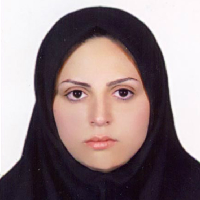Removal of O-Nitrophenol from Petrochemical Wastewater: Comparison Between SBR and MSBR Biological Reactors
The discharge of wastewater from various industries such as petroleum and petrochemical, pollute water resources. The presence of these pollutants in water resources will cause disorders in the ecosystem and it has various risks to human health. The effluent usually contains organic matter, including phenol and its derivatives. In this study, three different types of reactors were used in the activated sludge process to study the biological removal of o-nitrophenol from the petrochemical industrial effluent. These reactors include Continuous Moving-Bed Sequencing Batch Reactor, Moving-Bed Sequencing Batch Reactor and conventional sequencing batch reactor. For this purpose, the operational indicators of each reactor were investigated and optimized. For MSBR, active sludge volume ratio (30%), aeration flowrate (18 L/min), operation time (4h), pH (7), filler to reactor volume ratio (4.7 %) and SVI (89 ml/g) were considered. Also, For C-MSBR indicators such as initial volumetric flowrate (20 ml/min), aeration flowrate (12 L/min), filler to reactor volume ratio (5.8 %) and SVI (98 ml/g) were optimized. As SBR is structurally similar to the other reactors, only initial volumetric flowrate was considered (40 ml/min) and based on the results, this reactor has better SVI (88 ml/g) than the other two reactors. Finally, based on the optimized parameters, percentage removal of ortho nitrophenol from a synthesized effluent, analogous to Karoon Petrochemical company effluent, was investigated by C-MSBR. In addition to o-nitrophenol, other chemicals such as Toluene and Benzene were also present. The results show the indicators including ortho nitrophenol percentage removal (84.7%), Chemical Oxidation Demand (COD) (94%), Biochemical Oxidation Demand (94.8%), BOD5/COD (0.57) and SVI (74.45 ml/g) comply with environmental standards and the treated effluent can be used in irrigation and agriculture by addition of one more processing step.
Wastewater , O-Nitrophenol , SBR , MSBR , (COD) , (BOD5)
- حق عضویت دریافتی صرف حمایت از نشریات عضو و نگهداری، تکمیل و توسعه مگیران میشود.
- پرداخت حق اشتراک و دانلود مقالات اجازه بازنشر آن در سایر رسانههای چاپی و دیجیتال را به کاربر نمیدهد.



